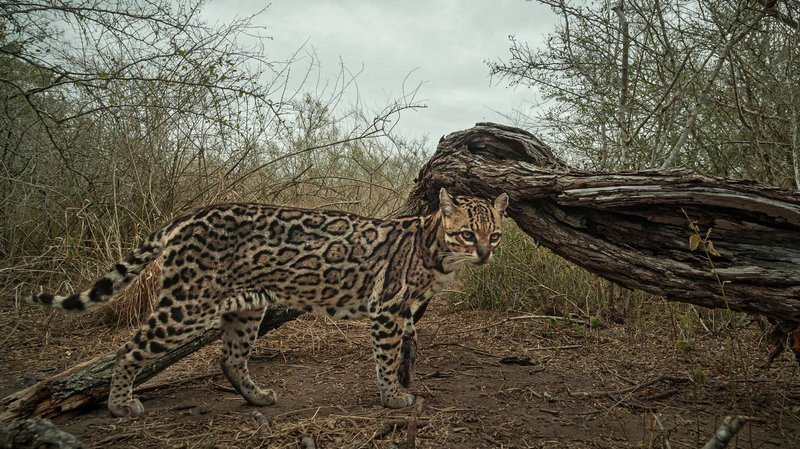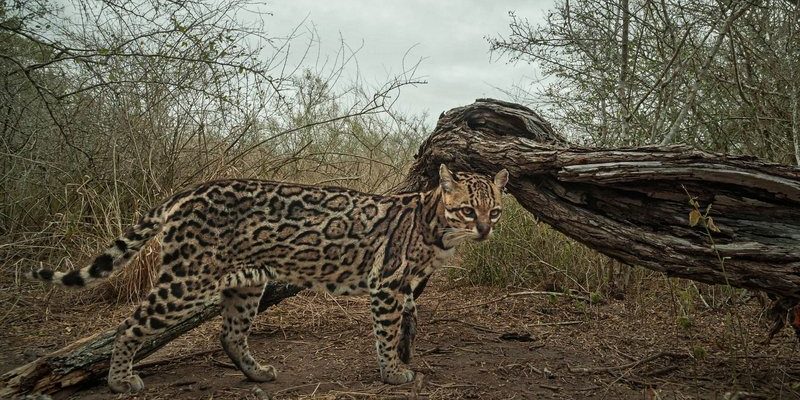
You might be wondering why ocelots are so fascinating. Think of them as the introverted artist of the wild—often elusive, yet their beauty can captivate anyone lucky enough to spot one. They are resilient and resourceful, making their homes in some unexpected places. Let’s delve into the specifics of ocelot habitats and distribution so we can better understand these incredible cats.
Ocelot Habitat Overview
Ocelots (Leopardus pardalis) are versatile felines that can adapt to various habitats. Generally, they prefer regions with dense cover and abundant prey. You’ll find them in environments such as tropical rainforests, savannas, and even scrubland. The thing is, they thrive in places where they can hide and hunt effectively. Dense foliage provides excellent camouflage from both predators and humans.
These cats are primarily nocturnal, meaning they do most of their hunting at night. This preference allows them to avoid many of their larger predators, including jaguars and pumas. Additionally, the cover of darkness gives them the chance to sneak up on their prey—rabbits, rodents, and birds, to name a few. So, when we talk about ocelots’ habitats, think thick forests or bushy areas where shadows play a crucial role in their survival.
Temperature and Climate Preferences
Ocelots are generally found in warm climates. They thrive in areas with temperatures ranging from 20°C to 30°C (68°F to 86°F). This range is pretty typical of many tropical and subtropical regions they inhabit. They’re not fans of extreme cold, so you won’t find them wandering in snowy landscapes or icy terrains.
Here’s where it gets interesting; ocelots are also adaptable to varying humidity levels. From the moist air of rainforests to the drier conditions of scrubland, they can make themselves at home. However, they tend to avoid very dry areas like deserts. You might be picturing them sipping water from streams or rivers—this is where they’re most comfortable, and it’s essential for their survival.
Geographic Distribution of Ocelots
Ocelots have a wide range that extends from the southern United States all the way down to South America. They can be found in various countries, including Mexico, Guatemala, Brazil, and even parts of Argentina. The distribution of ocelots is extensive, covering central and southern regions, which highlights their adaptability to different ecosystems.
In the U.S., they’re primarily found in Texas, particularly in the southern parts near the coastal areas. This region provides the right mix of habitat types, including wetlands and dense thickets, which are perfect for ocelots. Interestingly, their population in the U.S. is small and fragmented, making their conservation all the more critical.
Types of Ocelot Habitats
As you can imagine, ocelots are not picky about their homes as long as certain conditions are met. Here’s a closer look at the various types of habitats they inhabit:
- Tropical Rainforests: In these dense, lush environments, ocelots can easily camouflage themselves among the trees and foliage.
- Grasslands and Savannas: They thrive here, utilizing the tall grasses to stalk their prey while remaining hidden.
- Scrublands: These less dense areas provide sufficient cover and a variety of food sources, making them suitable for ocelots.
- Wetlands: They often frequent areas near water, which gives them access to additional prey and a place to cool off.
Each of these habitats offers unique opportunities and challenges for ocelots. For example, in tropical rainforests, they enjoy abundant prey, while scrublands give them more space to roam.
Challenges Facing Ocelot Habitats
While ocelots are skilled survivors, they face significant threats in today’s world due to habitat loss and fragmentation. The expansion of agriculture, urban development, and deforestation pose serious risks to their natural habitats. When forests are cut down or altered, ocelots lose their homes and are forced into smaller, isolated patches of land.
Additionally, the roads and highways slicing through their territory can lead to dangerous encounters with vehicles. Fragmentation also makes it harder for ocelots to find mates, affecting their population numbers. Conservation efforts aimed at protecting their habitats are crucial to ensuring their survival.
Conservation Efforts for Ocelots
Recognizing the challenges ocelots face, various organizations and governments have stepped in to help. Many conservation programs focus on habitat restoration and protection, ensuring that these cats have safe spaces to thrive. Preserving key areas like national parks and wildlife reserves is essential.
Moreover, educating local communities about the importance of ocelots and their role in the ecosystem can foster a sense of stewardship. When people understand that ocelots help maintain the balance of their habitats, they’re more likely to support conservation efforts. It’s a win-win situation, right?
Ocelots are captivating creatures that deserve our attention and protection. Their habitats are diverse, ranging from tropical rainforests to scrublands, each offering unique benefits and challenges. By understanding where ocelots live and the obstacles they face, we can better appreciate the role they play in our ecosystems.
So, the next time you read about these striking cats or catch a glimpse of one in a documentary, remember that their survival hinges on the preservation of their habitats. It’s up to us to ensure these beautiful felines continue to roam the forests and fields for generations to come.

